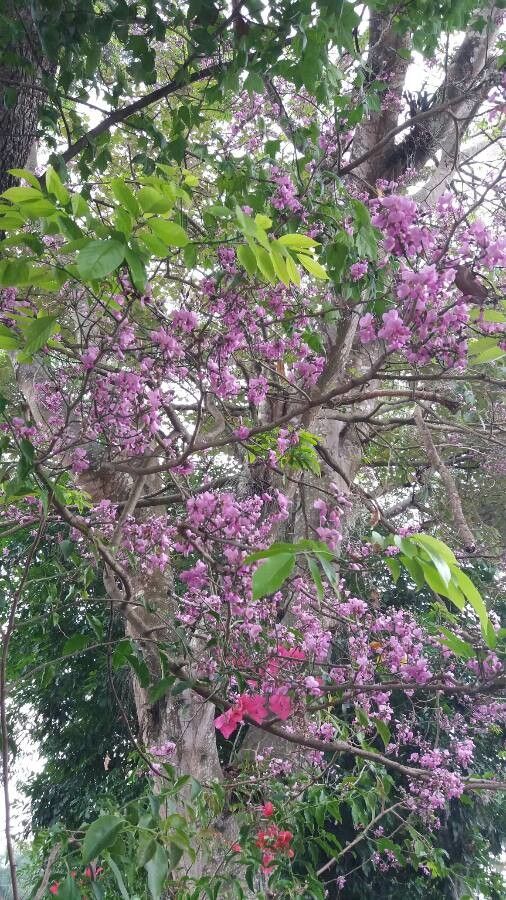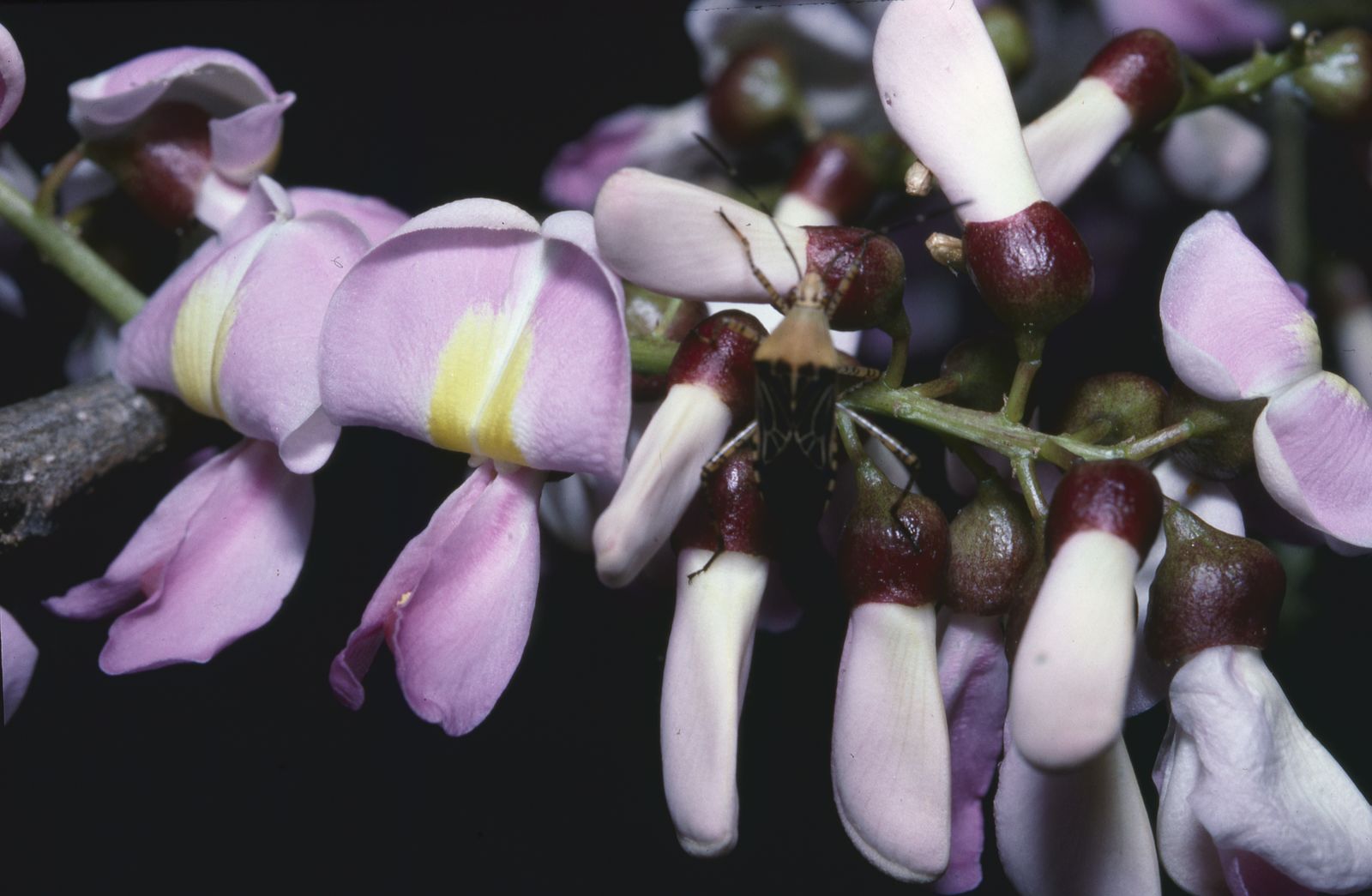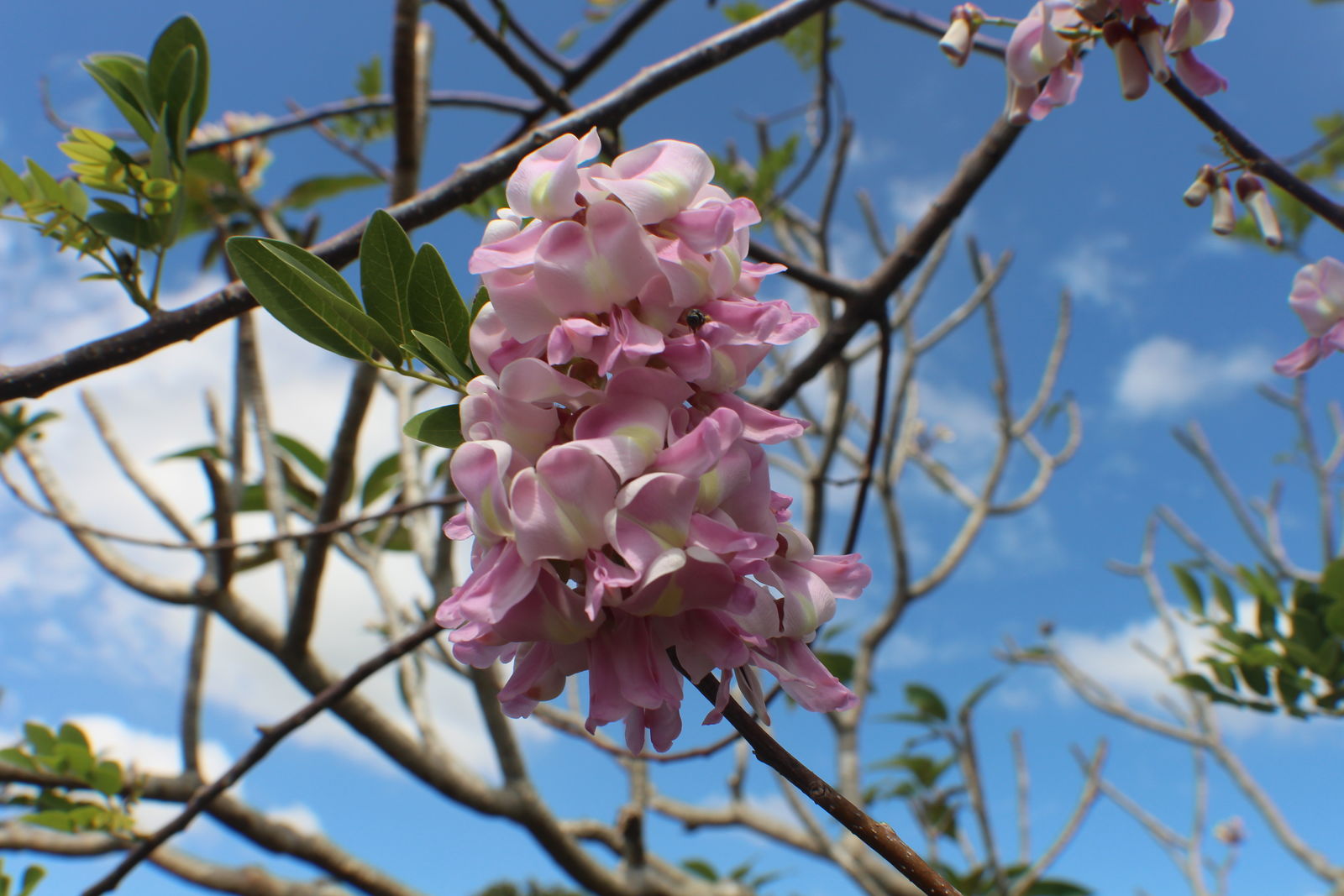Madre de Cacao
gliricidia sepium
Also known as: ["Cacao Tree Mother","Quickstick","Nitrogen-fixing tree"]
Overview
A fast-growing, nitrogen-fixing tree native to tropical regions, valued for its timber, forage, and soil improvement properties.
Benefits & Perks
["fast growing","drought tolerant","shade tolerant","wildlife attractant (bees, butterflies, birds)"]
Botanical Classification
| Phylum: | Magnoliophyta |
| Class: | Magnoliopsida |
| Order: | Fabales |
| Family: | Fabaceae |
| Genus: | Gliricidia |
| Botanical Name: | Gliricidia sepium |
Plant Characteristics
Basic Information
- Category: Trees
- Suitable Location: outdoor garden, field, or as a shade tree in agroforestry systems
- Suitable For:
- Is Weed: No
- Allergenicity: low
Environmental Needs
- Climate: {"temperatureRange":"15–35°C"}
- Hardiness: {"zones":"9–11"}
- Misting: rarely required, only if ambient humidity is very low
- Drainage: Fast-draining to prevent root rot.
- Soil Type: Well-draining loamy soil with organic matter; tolerates poor soils but thrives with amendments.
Maintenance Level
- Maintenance Level: moderate
- Toughness Level: high
- Pruning Frequency: Annually or as needed to maintain shape and health.
- Pruning Intensity: Moderate; remove up to one-third of growth if overgrown.
Care Details
Ideal Sunlight Coverage:
Full sun (6–8 hours/day); tolerates partial shade but may grow less vigorously.
Sunlight Tolerance Tips:
Acclimate gradually if moving from shade to sun; protect from intense midday sun in hot climates; adjust placement based on light intensity.
Care Requirements
Care Difficulty
easymoderate
Sunlight
full sun to partial shade
Rotate plant for even growth; use sheer curtains to filter intense light; monitor for sunburn.
Watering
every 7–10 days during dry periods, reduce in rainy seasons
Water thoroughly but infrequently; ensure good drainage; adjust based on season and growth stage.
Soil
well-drained, loamy soil with moderate organic content
pH: Slightly acidic to neutral (pH 6.0–7.0).
Avoid heavy clay soils; ensure consistent moisture without waterlogging; enrich with organic matter.
Temperature
Thrives in warm conditions (20–30°C); tolerates brief periods below 10°C but prefers above 15°C.
Avoid sudden temperature changes; protect from frost; ensure good air circulation.
Fertilizing
every 2–3 months during active growth
Apply fertilizer after watering; flush soil occasionally to prevent salt buildup; match fertilizer to soil pH.
Propagation
Methods
Stem cuttings or seeds; stem cuttings are faster and more reliable.
Step-by-Step Propagation Guide
- Take a 4–6 inch cutting.
- Remove lower leaves.
- Apply rooting hormone.
- Plant in medium.
- Maintain humidity.
Best Time: Spring or early summer when growth is active.
Environment
High humidity (70–90%); warm temperatures (20–25°C); indirect light.
Medium
Well-draining mix like perlite and peat moss or cactus mix.
Hormone
Rooting hormone recommended for faster and more reliable rooting.
Timeline
Roots develop in 3–6 weeks; new growth appears in 2–3 months.
Tools Needed
Pruning shears, rooting hormone, small pots, misting spray bottle.
Quick Tips
Use healthy, non-flowering stems; keep soil consistently moist; provide bottom heat for faster rooting.
Pruning & Repotting
Pruning Guide
Method
Selective thinning; heading back to encourage branching.
Pruning Plan
Shape the plant; encourage bushier growth; remove dead or diseased wood.
Tools
Pruning shears, loppers (for larger branches), disinfectant.
Checklist
Disinfect tools; prune during dormancy; make clean cuts; remove crossing branches.
Repotting Guide
Best Season
Spring, before new growth begins.
Pot Size
One size larger pot; ensure it’s not too large to avoid waterlogging.
Method
Remove plant gently; trim roots if needed; use fresh well-draining soil; ensure pot has drainage holes.
Suggestions
Repot every 2–3 years or when roots fill the pot; beneficial for vigorous growth.
Checklist
Check root bound status; prepare new pot; use fresh soil; water after repotting.
Advanced Care Tips
Watering Mastery
Watering Checklist
Check soil moisture; water deeply; ensure drainage; adjust for season.
How to Apply Water Properly
Water at the base of the plant, ensuring moisture reaches the root zone; avoid wetting foliage; allow excess water to drain away.
Watering Schedule Tips
Water deeply once the top inch of soil feels dry; reduce frequency in winter to prevent root rot.
Soil Improvement
Add compost or well-rotted manure; mix in perlite or sand for drainage; ensure aeration.
Temperature Stress Management
Signs of Temperature Issues
Yellowing leaves (cold stress); leaf drop or stunted growth (extreme heat).
Cold Stress
Growth slows or halts; leaves may turn yellow or drop; risk of root damage in prolonged cold.
Solution: Move to a warmer location; provide frost protection; reduce watering in cold periods.
Hot Stress
Wilting despite moist soil; leaf scorch; reduced flowering or leaf drop.
Solution: Provide shade during peak heat; increase humidity; water deeply and mulch to retain moisture.
Fertilizing Guide
Fertilizing Checklist
Check growth stage; use diluted fertilizer; avoid winter feeding; monitor for nutrient burn.
Fertilizing Method
Use balanced liquid fertilizer diluted to half strength every 4–6 weeks during growing season; avoid fertilizing in winter.
Common Problems & Solutions
Toxicity Warning
Cats
ToxicGliricidia sepium is toxic to cats, with the seeds and bark containing rotenone that can lead to serious health issues, including neurological damage.
⚠️ Symptoms:
🌿 Toxic Parts:
⚡ Toxic If:
if eaten
Dogs
ToxicThe seeds and bark of Gliricidia sepium are toxic to dogs due to the presence of rotenone, which can cause severe gastrointestinal and neurological effects.
⚠️ Symptoms:
🌿 Toxic Parts:
⚡ Toxic If:
if eaten
Humans
Slightly ToxicGliricidia sepium contains rotenone and other compounds that can be toxic if ingested, particularly in large quantities. These compounds can interfere with cellular respiration and have neurotoxic effects.
⚠️ Symptoms:
🌿 Toxic Parts:
⚡ Toxic If:
if eaten
Frequently Asked Questions
Q: Is Gliricidia sepium toxic to pets?
A: It is mildly toxic to dogs and cats.
Q: Does Gliricidia sepium require much maintenance?
A: It has moderate maintenance needs but is generally easy to care for.
Q: What are the benefits of planting Gliricidia sepium?
A: It fixes nitrogen, attracts wildlife, and is drought-tolerant.
Quick Reference
| Family: | Fabaceae |
| Care: | easy |
| Light: | full sun to partial shade |
| Water: | every 7–10 days during dry p |
Get Expert Care Tips
Download the Plantious app for personalized care reminders and plant identification!
Google Play App Store








